5 Steps to Marketing Automation Success

Editor’s Update: Check out our refreshed post on marketing automation, now packed with new insights related to AI and automation tools. We’ve updated this popular piece on marketing automation to bring you the latest developments for your business. So make sure to explore our updated content and stay ahead of the competition with all the latest marketing automation tools for your business.
Marketing automation is all the rage these days, and for good reason: it frees up humans to do things humans are good at and automates repetitive and mundane tasks. With marketing automation technology improving by the day, it’s easy to see why it’s become so prevalent.
A word to the wise, though: just because you engage with and implement marketing automation processes doesn’t guarantee your marketing automation success. It’s like anything else in life, you need to put in time and effort to hone your skills in order to generate the best results.
To help you avoid turning what should be a time-saving process into an inefficient and confusing mess, we put together an infographic outlining the 5 Steps to Marketing Automation Success:
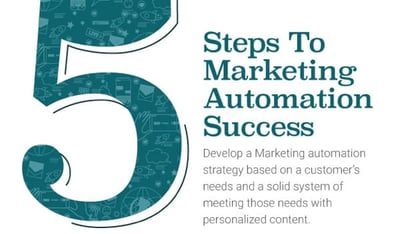
What is marketing automation? Successful marketing automation boils down to one simple concept: knowing exactly what your customers need and the reasons why they need it. In order to understand the what and the why of your customer’s needs, however, you have to truly understand your customers. This is why even though marketing automation is an automated process, it only works as well as you set it up. And to properly set things up, you need to understand the steps to implementing marketing automation and what causes your customers pain so you can help ease it.
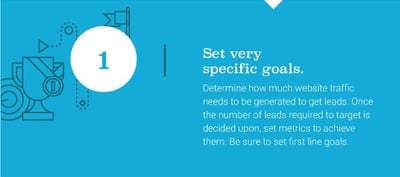
Once you know exactly how to meet the needs of your customers, the automation process begins. The first step is to set reasonable goals by delving into your site’s traffic numbers. If you know, you need 500 incoming site visits to generate 5 new leads, make that your goal and drive headlong toward it.
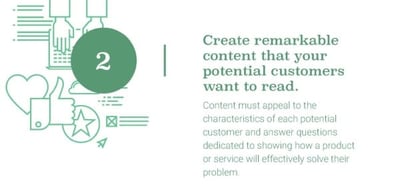
Upon first blush, marketing automation might seem drastically different than the digital marketing strategies of the last few years, but that’s not the case. Marketing automation uses the same tried and true tactics – content, social media, and email – it just organizes them better. Think of it like the wrap jobs you see on Christmas presents; you can use the exact same wrapping paper to wrap a present, but if one is wrapped with more care and expertise, it absolutely glows below the tree (while the poorly wrapped present lays crumpled to the side).
The content that functions best within an automation strategy focuses on answering customers’ questions while offering your products and/or services as potential solutions.
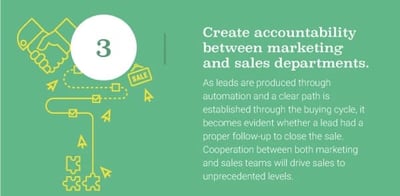
The worst thing about most lead generation processes is internal communication within a business or company. Small businesses often have so much work piled onto not enough people that leads fall by the wayside. And within larger companies, a misalignment between sales and marketing is often the culprit of too many leads left unconverted. Neither of these situations is a case of not enough leads being generated, it’s about leads being mishandled. If you can treat your leads properly – something marketing automation demands – you may not need to generate more.
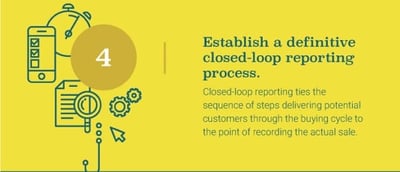
Another issue with many marketing strategies is they are so disconnected it’s nearly impossible to tell whether they are working. With the amount of access we have to data and information in today’s world, not knowing is never acceptable. If you establish a closed-loop reporting process that tracks your leads as they travel along your funnel, you’ll always know.
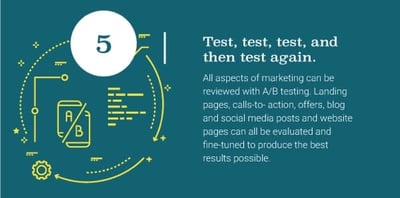
Yeah, yeah, implementing automation marketing and testing is another thing we talk about all the time. But the reason we harp on some of these things so much is that they make that much of a difference to your success! Landing pages, blog posts, emails, and social posts all need to be tested and tweaked until they deliver optimal results. There’s no reason to settle for less when a little bit of effort can help you maximize the dollars you spend on digital marketing.
10 Marketing Automation Tools Examples
- HubSpot, a marketing automation platform, offers email marketing and lead nurturing features.
- Marketo, now a part of Adobe Experience Cloud, provides lead management and analytics capabilities.
- Salesforce’s Pardot is a B2B-focused platform with lead scoring and email automation features.
- Mailchimp is known for its user-friendly interface and is widely used for email marketing, with features like drip campaigns.
- ActiveCampaign is a marketing automation software that combines email marketing, automation, sales automation, and CRM.
- Oracle Eloqua is an enterprise-level platform offering lead scoring and campaign management.
- SendinBlue, known for its affordability, integrates email and SMS marketing with automation features.
- Drip focuses on e-commerce, offering workflows, personalization, and segmentation.
- Zoho MarketingHub, part of the Zoho suite, provides multichannel marketing automation and lead management.
- SharpSpring includes email marketing, CRM integration, and behavior-based tracking for effective lead nurturing
When selecting marketing automation platforms, businesses should consider their budget, needs, and requirements.
AI and Marketing Automation: The Dynamic Duo Transforming Your Game
Remember the days of endless manual tasks and late nights glued to your marketing dashboard? Thankfully, those days are fading thanks to the rise of two powerful forces: AI and marketing automation. These dynamic duos are streamlining workflows, boosting efficiency, and unlocking unprecedented levels of personalization and engagement. But with a dizzying array of tools claiming “AI-powered” crowns, finding the best fit for your marketing arsenal can be tricky. This list guides you in navigating the exciting world of AI and automation and discovering the tools to propel your marketing magic to new heights.
Content Creation on Autopilot:
- Jasper AI: This versatile AI writer is your one-stop shop for copywriting. From sizzling social media captions to captivating product descriptions, Jasper crafts compelling content that grabs attention and converts leads, giving you more time to focus on the strategy part of your business.
- Surfer SEO: Once you have your buyer personas all sorted out, you’re going to need your content to dominate search engines. Surfer SEO analyzes your content against competitors, suggesting keywords, topic clusters, and sentence structures to optimize your work for Google’s hungry eyes.
- Lexica Art: Say goodbye to generic stock photos! Lexica Art uses AI to generate stunning, on-brand visuals that perfectly complement your content, making your blog posts, ads, and social media feeds pop.
Automate the Mundane, Master the Moments:
- Zapier: This workflow automation wizard connects all your marketing tools into a seamless symphony. Automate repetitive tasks like email scheduling, social media posting, and lead nurturing, freeing up your time for big-picture thinking.
- ManyChat & Chatfuel: Engage your audience on their preferred platforms! These AI-powered chatbots answer customer questions, capture leads, and nurture relationships through Facebook Messenger, WhatsApp, and other messaging apps.
- Grammarly & Hemingway Editor: Don’t let typos and convoluted sentences trip you up. These AI grammar gurus polish your writing to razor-sharp perfection, ensuring your message is clear, concise, and impactful.
Beyond the Toolbox: Data-Driven Insights and Personalization:
- Albert.ai: This AI-powered advertising platform analyzes your target audience and optimizes your ad campaigns for maximum reach and engagement. No more throwing spaghetti at the wall – Albert.ai targets the right people with the right message at the right time.
- FullStory: Get inside the heads of your website visitors! FullStory uses AI to track user behavior, reveal engagement patterns, and identify areas for improvement. Optimize your website layout, content, and calls to action for a conversion-boosting experience.
- Brand24: Stay ahead of the conversation. Brand24 monitors online mentions of your brand and competitors, giving you real-time insights into social media buzz, customer sentiment, and industry trends.
Remember, the magic lies not just in the tools but in how you wield them. Choose tools that align with your goals, understand their capabilities, and don’t be afraid to experiment. With the right AI and automation allies, you’ll be amazed at what you can achieve—think lightning-fast workflows, laser-targeted engagement, and content that truly connects. So, go forth, brave marketers, and let the AI revolution power your path to marketing mastery!
This is just a starting point, of course. Feel free to delve deeper into specific tools, share your favorite AI and automation secrets, and spark a conversation about how these game-changing technologies are reshaping the marketing landscape. Let’s make the most of this dynamic duo and turn our marketing dreams into reality, one automated task and AI-powered masterpiece at a time!
Conclusion
As Porky Pig would say, “That’s all, folks!” But please, share this infographic with vigor, and come back in December to see what we come up with for the holiday season. Find the full infographic below and contact our team for more information about marketing automation.

About the Author
Rick spent 20 years in the insurance industry in finance, primarily developing reporting platforms for B & C stakeholders. His ability to speak to consumers of data (managers and analysts) and translate their needs to programmers led him to start his own digital marketing agency in 2004 to develop data driven solutions for business owners.
The Best Digital Marketing Insight and Advice
We are committed to protecting your privacy. For more info, please review our Privacy and Cookie Policies. You may unsubscribe at any time.
Don’t stop the learning now!


